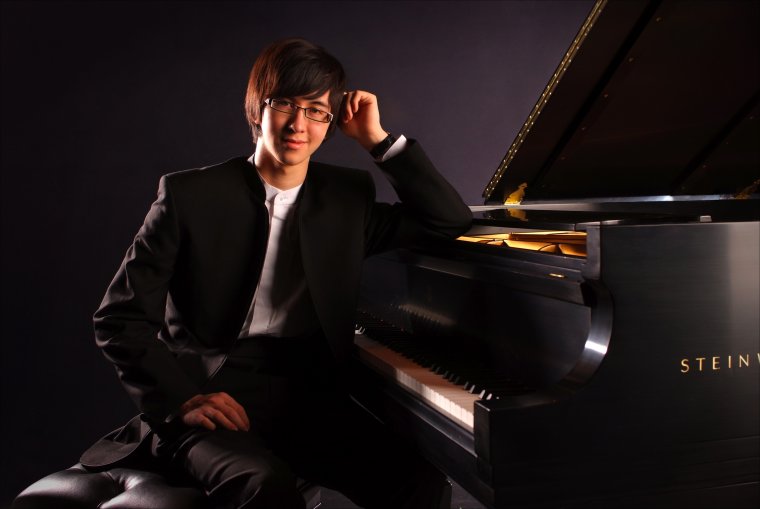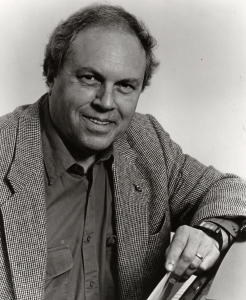1957, and the listening was good in ASO’s midcentury Carnegie program

Charlie Albright gave Vivian Fine’s “Concertante” a Jerry Lee Lewis shake Friday at Carnegie Hall with American Symphony Orchestra.
Beethoven, it is said, was the first composer to think of himself as writing classical music — that is, music that would be played and appreciated long after his death.
Since then, composers have dreamed of immortality à la Beethoven, or at least Locatelli or Grieg. But by a seemingly inexorable process, today’s composer of note becomes tomorrow’s footnote.
In a program essay for “Sounds of the American Century,” the concert performed by the American Symphony Orchestra Friday night in Carnegie Hall, conductor Leon Botstein vowed to resist that trend. “Music must be heard live and with an audience to be realized,” he wrote. “We are determined to advocate for the unfairly neglected from the past and to push against the winds of fashion.”
Friday the orchestra turned its lens on the American music scene in the middle of the 20th century, and found four works that vividly expressed the passions and preoccupations of the time, in the concert hall at least. It was a memory trip for some in the audience, for others a history lesson.
Absent from Friday’s group were the serialists, disciples of Schoenberg and Webern whose composing method dominated the academy but struggled to find favor with a wider audience. Even the more graspable dissonances of three of Friday’s composers — Vivian Fine, Jacob Druckman and William Schuman — had struggle enough to find a spot on concert programs next to the Old World masters.
But having achieved some measure of fame, those worthies tried to ease the struggle for others. Robert Mann, the longtime first violinist of the Juilliard String Quartet, helped spark that era’s chamber-music boom by mentoring countless young musicians and ensembles. Composing was a sideline for him, but judging from his Fantasy for Orchestra he was good at it.
Introduced by Dmitri Mitropoulos and the New York Philharmonic shortly after its composition in 1957, Mann’s Fantasy then spent 60 years on the shelf before Botstein retrieved it to lead off Friday’s program. In it, the violinist showed a thorough knowledge of string sound and atmospherics, but also painted effectively with woodwind and brass colors. The many felicities of scoring included a violin solo floating high above a murmur of winds, and a gauzy passage enhanced with the tinkle of a celesta.
Agitated outbursts driven by brass and bass drum repeatedly interrupted these musings. Atonal but recognizable themes emerged and developed, giving this episodic music a sense of direction toward its brief, vehement coda. It was clear from Botstein’s and the orchestra’s committed performance that, in today’s parlance, Robert Mann could have been a composing “brand” had he chosen to push in that career direction.
From her base in Bennington, Vermont, pianist and composer Vivian Fine devoted much of her time to advising composers and organizing concerts and festivals where their music could be heard. In her own works, Fine favored a suave, Poulenc-type take on modernity, harmonizing in euphonious thirds and sixths with a few piquant detours.
The title of Fine’s 1944 Concertante for Piano and Orchestra signaled a musical relationship that was more collaborative than competitive, but the solo part still contained plenty of finger-tangling passages, which Friday’s young piano soloist Charlie Albright dispatched with flair.
With tender phrasing, Albright played the lyrical Orpheus to the orchestra’s stern Furies in the piece’s opening movement, but eventually swelled to two-fisted Brahmsian sonorities. The second and final movement, a jaunty affair in rat-a-tat rhythm, left a spot near the end for a traditional “improvised” cadenza; Albright played one he composed himself, which started in Fine form but branched out into Lisztian extravagance, delighting the audience.
The cherry on that sundae was the pianist’s 60-second encore, hammering out a chorus of “Great Balls of Fire” in the rockin’est Jerry Lee Lewis style. Talk about ’50s American music!
Botstein stretched his postwar-America period considerably forward to include Prism, a 1980 piece by Jacob Druckman, who formerly taught composition at Bard College, of which Botstein is president, before establishing himself at Juilliard.
The fashion in orchestral sound by then was to feature hard-edged percussion such as xylophone, bells and wood blocks, often mixed with high-pitched cymbals or a mellow marimba. Engaging with music of the past often took the form not of neoclassicism à la Stravinsky or Fine, but of viewing actual old music through the “prism” of present-day orchestral sound, as Druckman did quite explicitly here with 18th-century excerpts by Charpentier, Cavalli and Cherubini wandering in and out of the piece’s modern rooms.

American Symphony Orchestra played “Prism,” Jacob Druckman’s modernist refraction of old-world composers, Friday at Carnegie Hall.
Druckman’s intent was to connect with and respond to each composer’s operatic treatment of the Jason-and-Medea myth. A listener today, hearing their music fade in and out of Prism, might be forgiven for reflecting instead on the transitory nature of reputation. (Beethoven considered Cherubini the greatest of his contemporaries.)
Across the work’s three movements, Botstein brought out the richness of Druckman’s orchestral imagination, the bold strokes and the little touches, and moods ranging from eerie to romantic to fiercely tragic in the closing pages.
William Schuman began with a pop-music childhood—forming a schoolboy band with Frank Loesser—but became the chief executive of Julliard and then Lincoln Center, the personification of “classical music” in the public mind. During his early adulthood, a dawning sense of America’s importance in the world (and encouragement from conductor Serge Koussevitzky) sent Schuman, Roy Harris, Walter Piston, Howard Hanson, et al. on an undeclared but real quest for the right music for the moment, the Great American Symphony.
Schuman’s Symphony No. 3, the only work on Friday’s program that has even a toehold in today’s repertory, aimed to infuse the old classical forms of passacaglia, fugue, chorale and toccata with a jolt of American popular energy. Who but an American composer would disrupt an earnest, Brahmsian set of variations with blasts of brass? Or create a spiky fugue subject with sassy crescendos in it? Or drive massed strings higher and higher in fervent long chords?
Botstein and his players may not have projected every detail of Schuman’s complex score, and the saucy fugue may have dragged a bit, but they caught the bold spirit of the occasion. The brass shone with power and precision, the woodwinds sparkled in the closing Toccata’s humorous loop-de-loops, and the unrelenting pat-a-pat of the snare drum got that movement rolling toward a satisfyingly huge fortissimo finish.
The American Symphony Orchestra performs Bohuslav Martinů’s opera Julietta in concert at Carnegie Hall 8 p.m. March 22. americansymphony.org; 212-868-9ASO (9276).
Posted Jan 28, 2019 at 11:38 am by Sisko24
I was at this concert and it was outstanding. Why isn’t this music programmed more often? I found myself wanting to hear each piece repeated.